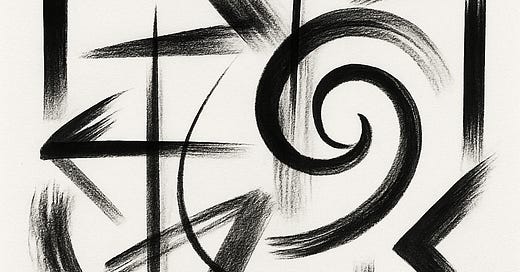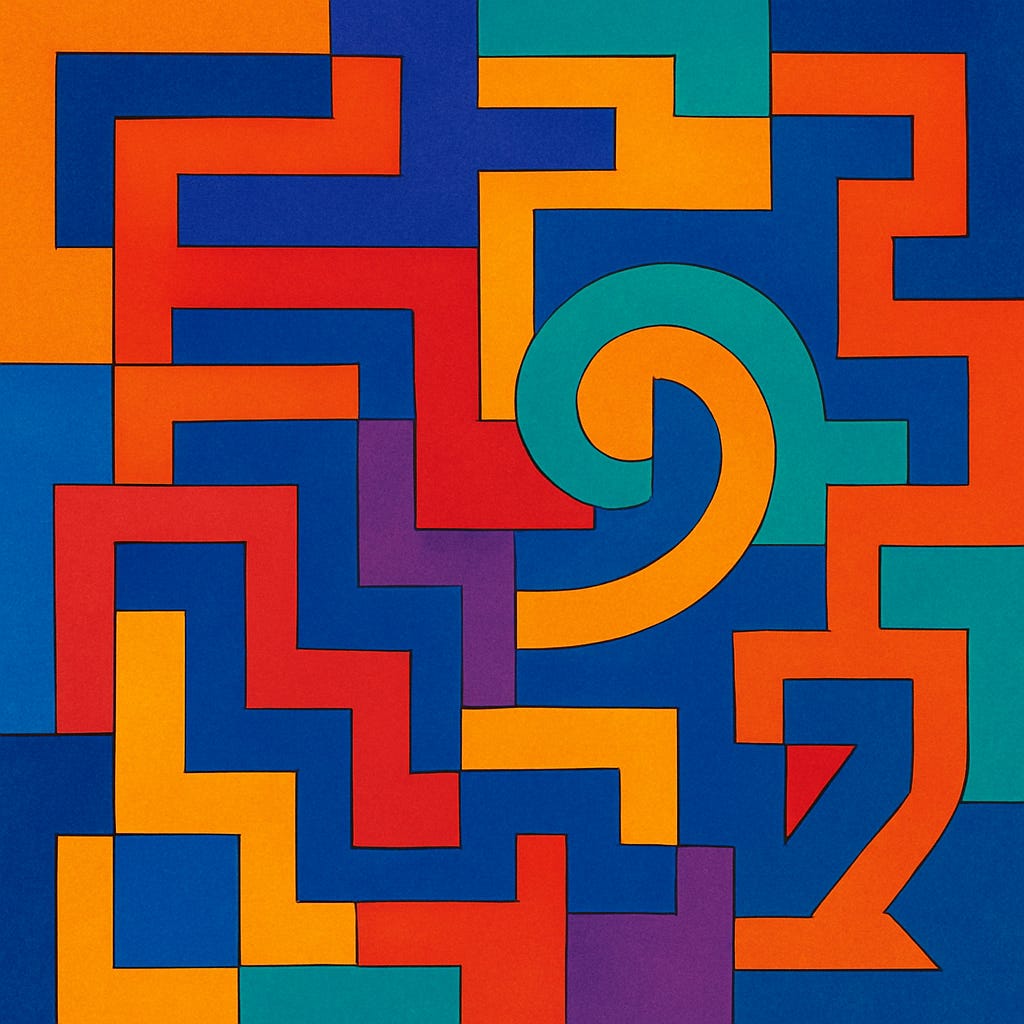Part 3 – Letting Go of Preciousness in an Age of Creative Abundance
Valuing Process Over Product
I. The Cult of the Finished Thing
There’s a certain kind of reverence we often attach to creative work. Not just admiration, but preciousness—a belief that art must be rare, delicate, and sacred. That the good stuff is hard to come by. That only a few people really have “it,” and that when we find it—whether in ourselves or others—we must polish it to a mirror shine before the world sees it.
This mindset is not just limiting. It’s corrosive. It feeds perfectionism, paralyzes experimentation, and wraps the creative process in velvet ropes. It’s why many people never start. Or start and never finish. Or finish and never share.
Then along comes AI, generating endless poems and paintings and piano concertos in seconds. Suddenly, the scarcity spell breaks. The pedestal wobbles. If a machine can flood the world with competent, even beautiful work, what happens to the idea that creativity is special? That you are special?
For many, this feels like a crisis. But it may be something else entirely.
But, AI didn’t devalue creativity. We did that ourselves—by treating creative work as precious instead of plentiful, performative instead of participatory. We decided it only mattered if it sold, if it stunned, if it stood above.
But creativity has never been about perfection. It’s about process. And process doesn’t need to be good. It just needs to be real.
II. The Preciousness Trap
Preciousness is the voice in your head that says:
If it’s not great, don’t do it. If it’s not new, don’t share it. If it’s not original, don’t bother.
It whispers that your ideas must be rare to be worthy, that your process must be invisible, that your work must be “better” than something—often undefined—to deserve attention. It creates a culture of hesitation. A kind of internalized gatekeeping.
This isn't humility. It's scarcity masquerading as discernment.
AI didn’t invent this trap. It just made it visible. When a model trained on the entirety of human creative history can produce a clever sonnet or a haunting melody in seconds, it doesn’t mean our creativity is obsolete—it means the value system we built around it was always fragile. We were measuring worth by distance from others, not depth within ourselves.
Preciousness turns creativity into a performance.
Process turns it back into an act of attention.
To step out of this trap, we need to stop chasing exceptionalism and start reclaiming experimentation. As the writer Donald Barthelme once said, “The writer is that person who, embarking upon her task, does not know what to do.” Creativity begins in not-knowing—and in choosing to act anyway.
III. The Process Is the Antidote
If preciousness is the trap, process is the way out.
Not the kind of process that’s optimized, branded, or monetized. Not the version that turns creative work into a deliverable. I mean the real thing: the messy, nonlinear, sometimes boring, often frustrating, occasionally transformative act of just making something.
The process is where the real stuff lives—curiosity, doubt, surprise, failure, recovery.
The process is human. That’s why it still matters.
AI can deliver dazzling outputs. It can finish what you’ve barely started.
But as of now, it doesn’t fumble. It doesn’t second-guess. It doesn’t circle back to something clumsy in a draft and realize it’s the heartbeat of the whole piece. It doesn’t wonder if what it’s making even matters—and then make it anyway.
Maybe someday it will. Maybe it already does in ways we don’t yet understand. But whether or not AI ever learns to feel, what it can’t replace is the feeling that rises in you when you’re deep in the act of creation. That sense of momentum, insight, connection—that’s still yours. And if you’ve ever felt it, you know it doesn’t come from the polish. It comes from the process.
And yes—you can feel it even when you create with AI.
I’ve felt it. I’ve written more songs because of AI than I ever would have without it. Not because AI made the songs good, but because it opened the door. It helped me engage the process more fully, more often. It made the work feel possible. And the joy? The satisfaction? That hasn’t been diminished. It’s been sustained.
Sustained because I would not have engaged in the process as fully without AI. Using AI opened the door for me.
Using AI is no more anathema to the creative process than reaching for a dictionary or walking through a museum. It’s a tool, a reference, a spark—not a substitute for attention, effort, or care.
Whether you use AI or not is your choice.
But please don’t dismiss the work, the process, or the people who find it useful—who may even find it necessary.
Creativity doesn’t need purity. It needs participation.
IV. Creativity Is Not a Job, But Sometimes It Has to Pay
For many, creativity isn’t just personal—it’s professional. You don’t just love making things. You also need to make a living from them.
So when AI enters the arena—faster, cheaper, sometimes surprisingly good—it doesn’t just challenge your identity. It disrupts your income.
Musicians lose sync jobs. Illustrators see clients disappear. Writers get offered half their usual rate—because the client can “just use AI.” These are not abstract concerns. They’re material shifts in the creative economy.
What’s essential is to distinguish economic disruption from creative worth.
Your creativity is not less real because it’s harder to monetize.
And someone else’s work is not less worthy because they use tools you don’t.
If we want space for diverse creative practices—including those that resist AI—we have to stop moralizing the choice to embrace it. The real questions here are about ownership, labor, and equity—not legitimacy.
We can fight for fair pay, attribution, and transparency without turning creative choices into moral hierarchies.
V. Thought Experiment: What If AI Becomes a Creative Genius?
Imagine a future in which AI creates transcendent, original, genre-defying art. Novels that reshape how we think. Films that leave us shaken. Music that echoes in our bones.
Would that mean the end of human creativity?
Not at all.
Because creativity is not a competition. It’s a conversation. More art—of any origin—means more material to respond to, remix, and rethink. The human imagination has always thrived in abundance, not scarcity.
Brian Eno understood this long before generative AI. His Oblique Strategies offered prompts to deliberately disrupt linear thinking, proving that randomness, constraint, and surprise could be creative partners, not obstacles.
AI may generate extraordinary work. But humans generate context, resonance, relationship, and memory. We experience meaning through our bodies, histories, and emotions.
Yes, the economic model may shift. Some forms of creative labor may diminish. But that’s a question of markets—not of meaning. And meaning is where creativity begins.
VI. Purity Is Precious. But So Is Letting Go of It.
Some creators hold tight to a sense of purity in their work—the idea that it must be unassisted, unfiltered, unmistakably theirs. That’s a valid instinct. But it becomes dangerous when it hardens into superiority.
All originality is a phantom. Everything is built on what came before.
No one creates from a vacuum. AI didn’t invent derivation—it just made it obvious. The idea that some work is “pure” and other work is “contaminated” by collaboration or assistance is more about ego than ethics.
Elizabeth Gilbert, in Big Magic, puts it simply: creativity isn’t rarefied. It’s accessible. It belongs to anyone willing to show up. Not because they’re fearless—but because they’re willing to work alongside the fear.
Letting go of purity doesn’t mean giving up on care, skill, or standards. It means stepping away from a false hierarchy. It means recognizing that creative power doesn’t come from isolation—it comes from engagement.
VII. Practice, Not Proof
Valuing process over product is not a technique. It’s a stance—a way of being with your work that privileges presence over performance, exploration over evidence.
In Art as Experience, John Dewey argued that art is not a thing—it is a quality that permeates experience. The making, not the object, is where the art happens. Process, then, is not preparation for the real work. It is the real work.
Psychologist Mihaly Csikszentmihalyi’s research on flow supports this. The most satisfying creative states, he found, arise not from finishing something, but from being fully immersed in the doing.
We don’t create to prove we’re special. We create to find out what’s there when we show up.
VIII. The Work Is Not the Point. The Making Is.
We’re entering an era in which machines can produce outputs that look a lot like our own. Some are impressive. Some are empty. Some are astonishing.
But none of them make you any less real.
You can still show up—with your hesitations, your half-drafts, your failed stanzas, your stubborn lines. You can still create because it calls something forward in you that nothing else does.
This is the real work. Not the masterpiece. Not the monetization.
Just the making.






Good points. Thx.
In many indigenous cultures, everyone is a creator. There is no separate class of creators. Everyone participates in the drum circles, the dances, the singing, the design and adornment of personal belongings